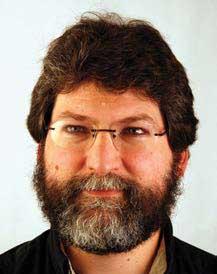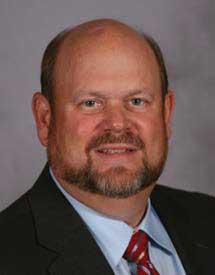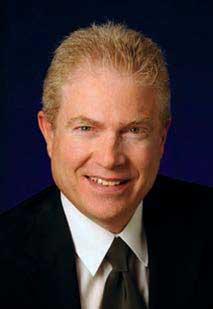NAB 2015: IP, 4K and ATSC 3.0 on BEC Agenda
LAS VEGAS—The NAB Show Broadcast Engineering Conference provides attendees a unique opportunity to immerse themselves in—and better understand—the technologies behind many of the new systems they will see on the show floor.
“Our goal for the NAB Show is to offer educational conferences, workshops, sessions and keynotes that will provide our members and other show attendees with an understanding of cutting edge technologies and business trends that will impact the future of our industry,” said Dennis Wharton, executive vice president of communications, NAB.
“Engineers and industry executives are anxious to understand the new technologies so they can successfully make decisions about them,” said John Maihot, IP solutions architect with Imagine Communications in Dallas.
THE IP FOCUS
Maihot’s expertise will be in high demand this year as IP is expected to be one of the biggest topics of the convention. The Society of Broadcast Engineers Ennes Workshop, held the Saturday before the convention, is famous for highlighting trending technologies and this year their workshop is all about IP-based infrastructure.

John Maihot, Imagine Communications The BEC—which takes place in the Las Vegas Convention Center from Saturday April 12 through Thursday, April 16—also will highlight other topics of great interest to broadcasters, from the upcoming ATSC 3.0 standard and UHD/4K updates to the event staples of RF and future FCC plans. Whether in the radio or television side of broadcasting, the BEC agenda offers coverage on topics of interest across all spectrums of the industry. New this year, the NAB is providing unique incentives for both students and government employees to attend the show and select conference sessions, as another part of their continuing efforts to inform and educate.
Few topics have been discussed as much before the show this year as the buzz around new IP infrastructure announcements. Systems integrators in particular are interested about this migration away from traditional broadcast infrastructure as they are often on the front lines of implementing technology changes.
“IP is a hot topic and we are spending a ton of time learning what is real today, or just beyond the horizon,” says John Wesley Nash, executive vice president and COO of CEI, a Newington, Va.-based systems integrator. “NAB should reveal several new approaches to solving some of the current challenges in this arena.”
Get the TV Tech Newsletter
The professional video industry's #1 source for news, trends and product and tech information. Sign up below.
Broadcasting has always had to evolve with changing technologies. Since the beginning of the century, the industry has gone from analog to digital, standard definition to high definition and migrated to file-based workflows. Workshops like Ennes on Saturday are key to keeping engineers and decision makers up to date on where the next turn in technology will take them.

John Wesley Nash, CEI “The sooner broadcasters start to think about IP solutions the better,” said John Marino, vice president of technology for NAB and organizer of the BEC. “The ways of delivering content to consumers have evolved making it important for broadcasters to build flexible facilities in order to monetize their content most effectively.”
4K AND ATSC 3.0
From inside the facility to delivering content, nothing will impact the television broadcasting more than the forthcoming ATSC 3.0 standard. On Sunday, an ATSC 3.0 tutorial session will discuss “building the next generation of television service.” The briefing will provide guidance on what broadcasters can expect from the nearly completed new broadcast platform.
“ATSC 3.0 represents a major change in the television industry,” Marino said. “We feel that broadcasters need to understand the industry’s future and realize that change may be disruptive, but new opportunities will eventually emerge.”
With speakers ranging from both technology experts to equipment manufacturers, attendees of this tutorial session will get the latest on how they will one day be able to leverage their channels for UHD, mobile broadcasting and interactive services.

John Marino Sunday also will feature other sessions providing guidance and insights into the future of many other technologies. After the BEC keynote address at 9:00 a.m., sessions will focus on advances in radio, next generation televisions, and the roadmap for a 4K to 8K production model.
“Television on multiple platforms and the technologies that support these along with adaptive bitrate technologies are additional key tech trends being covered in this year’s BEC,” adds Marino.
Those who think the NAB is solely about television will discover numerous programs and discussions on trends in AM and FM radio technologies. There is also the “RF Boot Camp” on Wednesday that provides radio and TV engineering and operations staff a full overview of the RF transmission chain. From FCC regulations, to transmitters and antennas, it is always important to make sure that the people who are involved in delivering the content over the air are as up to date as those creating it.
FOR GOVERNMENT AND STUDENTS
In recent years many state and federal technology professionals have not been able to attend the show or conference due to nationwide budget issues. This year with a current and valid government ID, one can attend the show and select conferences free of charge.
“We started this incentive due to sequestration and budget constraints levied on many government personnel,” said Wharton. The NAB also realized that many students do not have the funds to attend NAB, so they are offering considerable registration discounts.
For those who can’t get to see or attend everything that they want to during the show, the NAB is providing online options including access to exhibitor product lines and a variety of show events. In addition to the networking opportunities and exhibitor meetings, adding BEC sessions to a show visit are a good way of making the most out of the educational opportunity that is NAB.
For a schedule of the six-day Broadcast Engineering Conference, visit www.nabshow.com/attend/broadcastengineering-conference.

